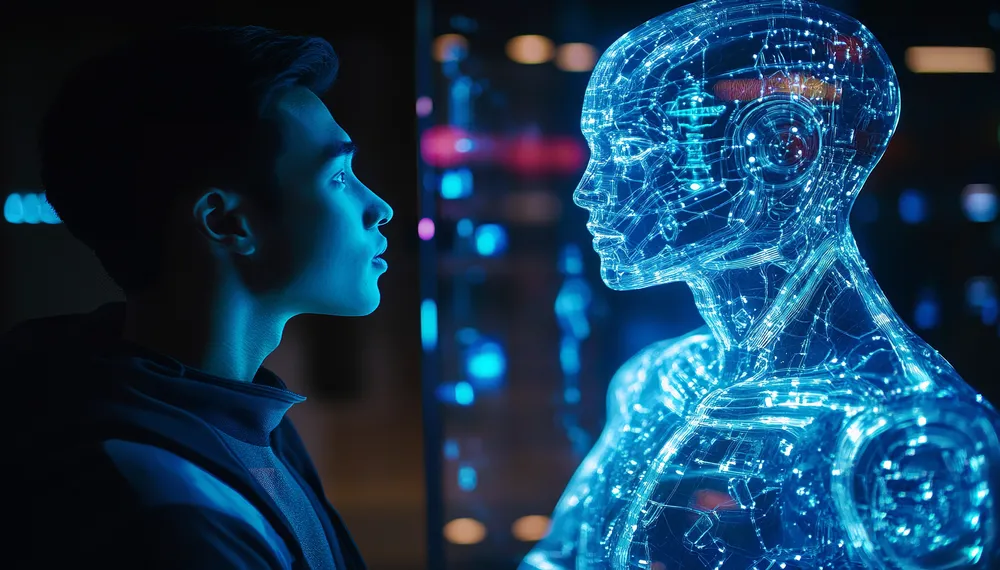The Role of Generative AI in HR: A Human-Centered Approach

Generative AI (GenAI) is transforming industries, and human resources is no exception. It offers opportunities to automate administrative tasks, personalize learning experiences, and improve recruitment processes, allowing HR professionals to focus more on strategic activities. According to Gartner, 81% of HR leaders are either exploring or have implemented AI in their HR functions. While the potential of AI is vast, it is essential to adopt these tools with a thoughtful, human-centered approach, ensuring they support—not replace—human capabilities.
GenAI’s Impact Across HR Functions
AI can be particularly powerful in three key areas of HR: recruitment, employee development, and daily operations.
1. Recruitment and Talent Acquisition
Recruitment is one of the most time-consuming HR functions, often involving large volumes of resumes, scheduling interviews, and repetitive communications. GenAI can streamline these processes by automating initial screenings, creating tailored job descriptions, and compiling interview questions. AI tools can even analyze candidate responses, freeing up time for HR professionals to focus on more strategic activities—such as reducing bias and engaging top candidates. Instead of replacing HR teams, AI allows them to spend more time on tasks that require human intuition and connection.
2. Employee Development and Learning
Personalized learning is critical in today’s evolving work environment, and GenAI offers ways to tailor training programs to individual employees. By creating customized quizzes, generating learning materials, and crafting personalized learning paths, AI ensures employees remain engaged and up-to-date with necessary skills. This allows HR teams to focus on long-term talent development, ensuring each employee’s growth aligns with the organization’s future needs. The flexibility AI provides is key to ensuring a future-ready workforce that is continuously learning and adapting.
3. HR Operations and Employee Engagement
HR operations involve many routine tasks such as generating policy documents or answering employee queries. GenAI can handle these administrative duties efficiently, providing virtual assistance to employees in real-time, and freeing up HR professionals for more value-driven tasks like improving employee engagement. AI’s ability to automate these processes makes the HR function more responsive, supporting a positive employee experience without overwhelming HR teams.
Actionable Steps for HR Leaders
To successfully integrate AI into HR, leaders must adopt a human-first mindset while prioritizing high-impact use cases, fostering continuous learning, and communicating openly.
1. Prioritize High-Impact Use Cases
Not every AI application will offer the same value. HR leaders should focus on areas where AI can enhance efficiency without sacrificing the human touch. For example, automating administrative tasks in recruitment or developing personalized employee training programs can help HR teams focus on fostering relationships and driving engagement.
2. Foster Continuous Learning and Adaptation
As AI reshapes HR functions, it will also change job roles and skill requirements. To ensure employees adapt to these changes, HR leaders should invest in reskilling and upskilling programs that focus on AI literacy. This ensures that employees not only learn to use AI tools but also understand how AI will impact their roles, encouraging a mindset of growth and adaptability.
3. Communicate Transparently and Address Concerns
The introduction of AI can cause anxiety among employees, particularly around job security. HR leaders must communicate clearly and transparently, emphasizing how AI will enhance, not replace, their roles. By showing how AI can free up time for higher-value tasks, organizations can alleviate fears and build trust within the workforce.
In conclusion: Balancing Technology and Humanity ,Generative AI has the potential to redefine HR functions by improving efficiency, enhancing employee experiences, and driving innovation. However, its success depends on a thoughtful, human-centric implementation. By focusing on the right use cases and preparing employees for the changes ahead, HR leaders can leverage AI to complement—rather than replace—human capabilities.
As we move forward into this new era of HR, let’s not forget the importance of putting people at the center of everything we do. AI is a tool—a powerful one—but the heart of HR will always be its people. By blending the best of human and artificial intelligence, we can create workplaces where both can thrive, together.
We’d love to show you how we guide organizations through this transition, helping them integrate AI thoughtfully while ensuring their workforce remains engaged and future-ready. Together, we can navigate this new era, where AI and human intelligence work hand-in-hand to build better workplaces.
Reach out to us at growthpartners@gppc.in to talk to our People practitioners.